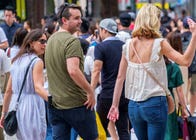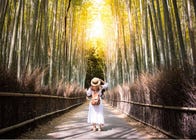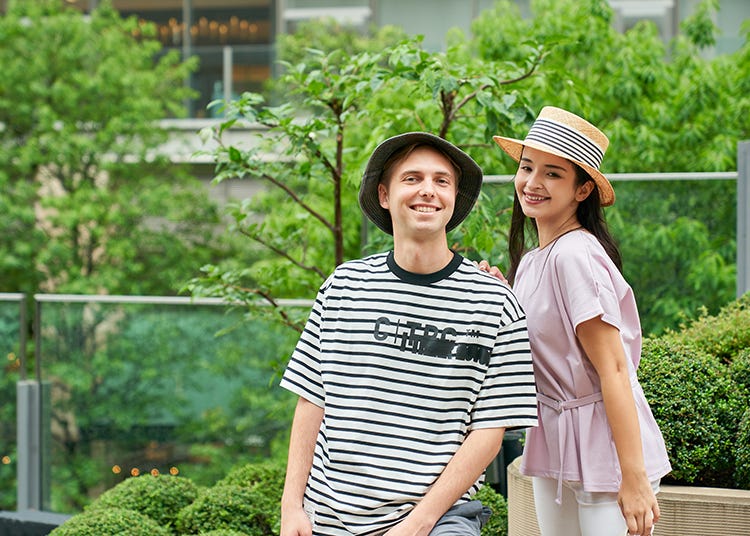
When is the best time to visit Japan? When is the best time to visit Tokyo? You have decided you want to travel to Japan - great! But now comes the hard part: planning.
- Table of Contents
-
- Here's the best time to visit Japan
- Pros and cons of traveling in each season in Japan
- Best season to travel in Japan
- The least crowded time to visit Japan
- The cheapest time to visit Japan
- List of Annual Events and Japan National Holidays 2024
- What to pack for Japan
- Try ‘Any Wear, Anywhere’ to reduce your suitcase space
- Final Word
Everyone says to visit during cherry blossom season, but is that really the best time to travel? The pictures you’ve seen of cherry blossom festivals look really crowded.
From flower viewing in spring, festivals in summer, and skiing in winter, each season is a brand-new Japan! That’s why careful attention needs to be paid to the when, not just the where, when planning your Japan adventure!
To help you with your planning, we’ve created the ultimate guide to Japan’s seasons, weather, and trends. Use this information to pick a time confidently and get the Japan you’ve dreamed of!
Here's the best time to visit Japan
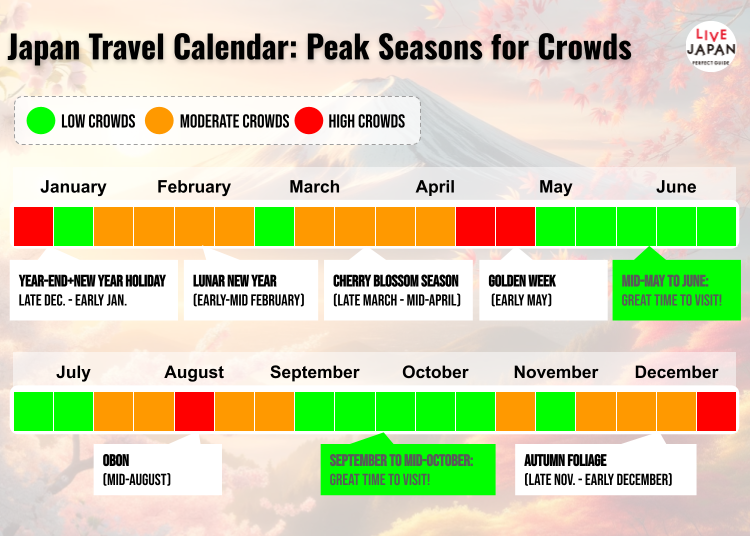
The best times to visit Japan are the spring (March-May) and fall (September-November) seasons, with May and October-November being the optimal months to balance good weather, fewer crowds, and lower prices.
The periods between March to May and October to November have the best weather. These times, which line up with spring and most of autumn, are filled with calm days and comfortable temperatures.
Nature lovers will appreciate the blooming flowers of spring, including the famed cherry blossoms, along with the equally stunning foliage of late autumn.
September-November are recommended as good alternatives to avoid the peak crowds and prices, while still enjoying pleasant weather and scenery.
Finally, the winter months can also be a good time to visit, with fewer tourists (except for snow resort areas like Niseko in Hokkaido) and lower prices, though the weather may be colder, especially in northern regions.
It all depends on you!
Japan is a beautiful country 365 days a year, and you won't regret your trip no matter when you go. However, depending on the season, you may see a very different Japan from the one you imagined.
That's why it's essential to create a list of goals for your trip, then compare them against each month to find the Japan you want to see the most.
Pros and cons of traveling in each season in Japan
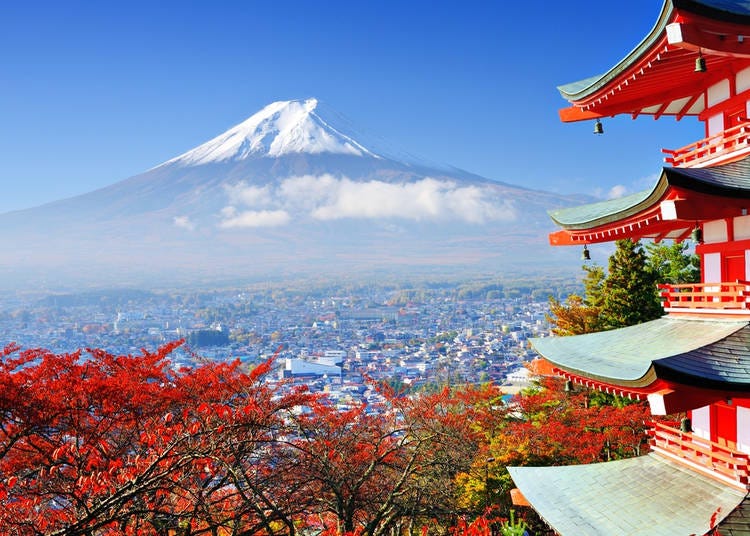
To help you choose the best time to visit Japan, we've compiled a handy pros and cons list for each season. After you've decided what you'd like to see and do, use this list to select the best time to go!
- Pros: Excellent skiing conditions in Hokkaido, calm and clear winter weather in major cities, and widespread festive light festivals.
- Cons: Busy New Year holiday period with potential closures and unpredictable, sometimes harsh winter weather leading to travel disruptions.
- Read More: Best Things to Do in Tokyo in January, What to Do in Osaka & Kyoto in January
- Pros: Peak ski conditions, vibrant snow and illumination festivals (such as the Sapporo Snow Festival and the Hirosaki Castle Snow Lantern Festival), and Early-blooming cherry blossoms and plum blossoms can be enjoyed.
- Cons: Coldest month with sub-freezing temperatures, snow and ice disrupting transport, and potential influx of tourists during Lunar New Year.
- Read More: Best Things to Do in Tokyo in February, What to Do in Osaka & Kyoto in January, Visiting Hokkaido in Winter, Enjoy Early-Blooming Sakura in February
- Pros: Warmer, calmer weather starts; cherry blossoms bloom from Kyushu to Tokyo in late March.
- Cons: Crowded cherry blossom spots, especially on weekends; persisting cold, wintry days north of Tokyo.
- Pros: Pleasant weather with gorgeous skies; blooming Japanese flowers like roses, tulips, wisteria, and rapeseed; late cherry blossoms in northern areas.
- Cons: Cold weather in Tohoku and Hokkaido; crowded cherry blossom spots in the north; busy travel and accommodation during the Golden Week public holidays.
- Read More: Best Things to Do in Tokyo in April, What to Do in Osaka & Kyoto in April, Visiting Hokkaido in Spring
- Pros: Continuation of fantastic weather; dazzling wisteria tunnels in bloom; picturesque flooded rice fields; large festivals like Sanja Matsuri kick off.
- Cons: Golden Week leads to packed travel conditions and fully booked accommodations.
- Read More: Best Things to Do in Tokyo in May, What to Do in Osaka & Kyoto in May, Visiting Hokkaido in Spring, 5 Fun Tours & Activities for Golden Week in Osaka & Kyoto
- Pros: Quieter tourist spots due to no public holidays; comfortable temperatures; easier travel with fewer people outdoors; mild weather in Hokkaido.
- Cons: The rainy season brings humidity and heavy downpours; famous landscapes like Mt. Fuji often obscured by clouds.
- Read More: Best Things to Do in Tokyo in June, What to Do in Osaka & Kyoto in June, Visiting Osaka in Summer, 25 Beautiful Traditional Festivals in Japan
- Pros: Rainy season winding down by late July; vibrant summer festivals like the Gion Festival in Kyoto and the Ise Shrine Fireworks Festival; colorful decorations for Tanabata, the Star Festival.
- Cons: Persistent rainy season until mid-July, continuing the issues from June.
- Read More: Best Things to Do in Tokyo in July, What to Do in Osaka & Kyoto in July, Visiting Osaka in Summer, Tokyo Fireworks Guide
- Pros: Weekly summer festivals featuring parades, fireworks, and concerts like Fuji Rock; clear skies perfect for beach outings; quieter large cities during Obon.
- Cons: Intense heat in August; typhoons risks increase, with potential transport disruptions; lots of insects; congested travel during Obon.
- Read More: Best Things to Do in Tokyo in August, What to Do in Osaka & Kyoto in August, Annual Events & Festivals in Japan
- Pros: Decreasing heat from August; blooming Spider Lilies and cosmos in late September; quieter tourist attractions post-summer holidays; end of peak international tourism season.
- Cons: Continued summer heat into early September; peak typhoon season brings potential transportation disruptions.
- Read More: Best Things to Do in Tokyo in September, What to Do in Osaka & Kyoto in September
- Pros: Stunning autumn colors make an appearance in northern Japan; cooler, pleasant October weather; widespread Halloween parties, particularly in Shibuya.
- Cons: Crowded parks and mountains for autumn leaf viewing; packed streets and trains during Halloween; increased tourism during Chinese holidays and the Mid-Autumn Festival in early October.
- Read More: Best Things to Do in Tokyo in October, What to Do in Osaka & Kyoto in October, Visiting Osaka in Autumn: What to Wear & Must-Visit Attractions, Autumn in Japan -Fall Foliage Forecast
- Pros: Comfortable cooler weather; low rainfall; vibrant red, yellow, and brown autumn foliage.
- Cons: Chilly evenings with winter onset in Hokkaido; busy parks due to autumn sightseers.
- Read More: Best Things to Do in Tokyo in November, What to Do in Osaka & Kyoto in November
- Pros: Start of Japan's ski season with favorable conditions in Hokkaido; beautiful illumination festivals and Christmas markets; feasible outdoor sightseeing; common clear, sunny days in Tokyo and Osaka.
- Cons: Return of cold weather across Japan; many ski resorts in Honshu may not have sufficient snow to open early in the season.
- Read More: Best Things to Do in Tokyo in December, What to Do in Osaka & Kyoto in December, What's Christmas Like in Japan?, What to Do During New Year’s and New Year's Eve
Best season to travel in Japan
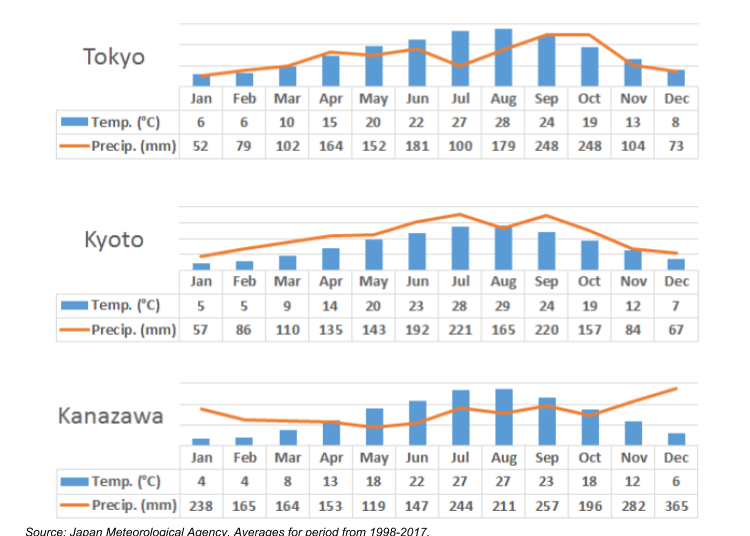
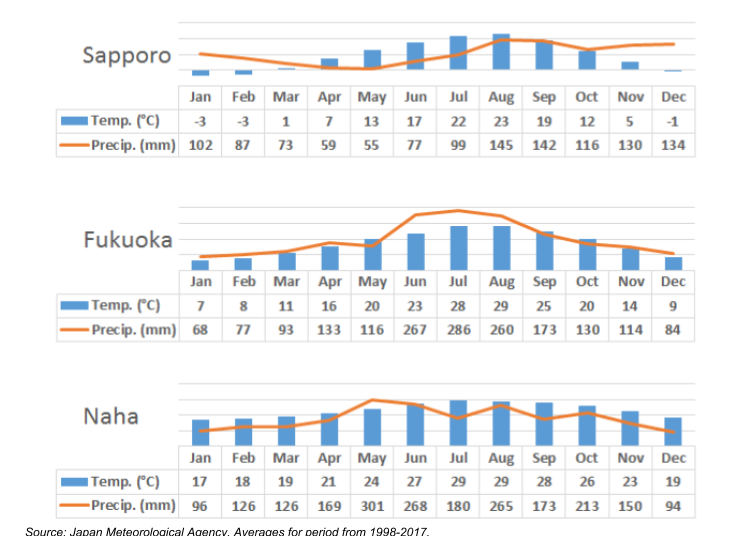
Japan has four seasons. Each begets a new set of activities, so you should first consider your objectives, then choose when to go.
For example, if you want an outdoor adventure, such as hiking, then the cooler weather of spring and autumn is ideal.
If beaches are your thing, then late June and August are perfect!
If a ski holiday is on your mind, you should pack your bags for January, February, and March.
Plan your activities first, then use this guide to find the season that will suit your needs best!
Visiting Japan in spring
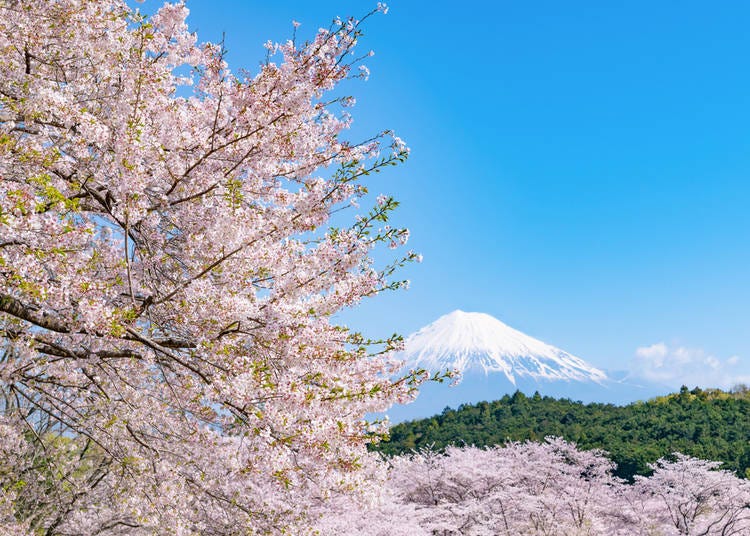
Spring weather in Japan
Spring brings serene, warm days and cool nights, with common but quickly clearing rain. Low humidity makes outdoor activities enjoyable. In April, Tokyo sees highs around 19°C (66°F) and lows around 10°C (51°F), while cooler Sapporo averages highs of 11°C (53°F) and lows of 3°C (37°F).
End of March – Mid-April: Cherry Blossom Season
High crowds. The cherry blossom (sakura) season is a spectacular but extremely busy time of year. The beauty of the blossoms draws large crowds, making major tourist sites very crowded. Accommodations, especially in Kyoto, often need to be booked 6 to 8 months in advance.
End of April – Around May 10: Golden Week (Japanese Holidays)
High crowds. Golden Week is a peak travel period in Japan, as there are few public holidays and many people travel simultaneously. Expect high accommodation rates, with bookings required months ahead, and heavy congestion at popular sights and on transportation networks.
After May 10 – End of June: Green Season/Early Summer
Low crowds. This period marks a transition from the unpredictable weather of early spring to a pleasant early summer, ideal for enjoying a variety of blooming flowers. Tourist sites are quieter, and accommodation prices are more attractive due to the lack of major holidays. Although occasional early summer rains occur, they are generally mild.
- In terms of clothes, bring both light clothes, along with a few jackets, sweaters and pants.
- Be prepared for crowds, even before peak cherry blossom bloom, and try to get most of your sightseeing finished before rush hour, starting at around 6 PM.
- Hotels in Kyoto get booked out as far as 6-8 months ahead. Reserve your accommodations as early as possible to avoid disappointment.
- If you’re allergic to pollen, spring may be a bad time to come to Japan.
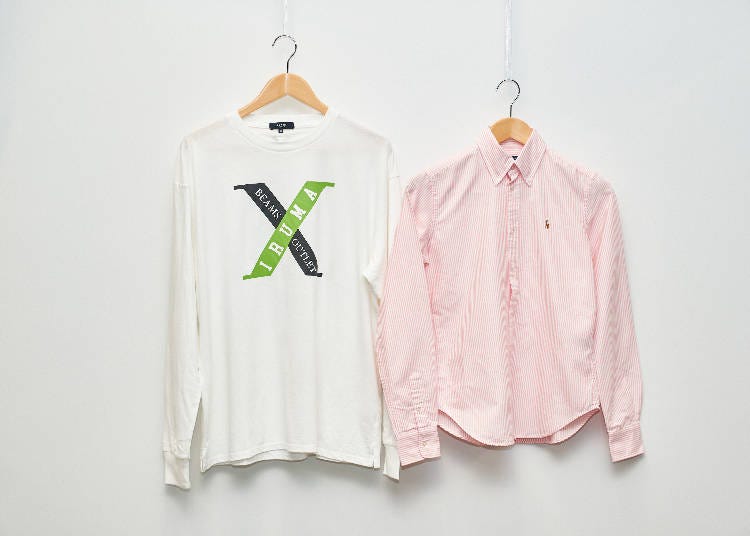
Bottom Line
In terms of weather, spring is one of the best times to visit Japan. However, choosing another season is recommended for those wanting to avoid crowds.
Visiting Japan in summer
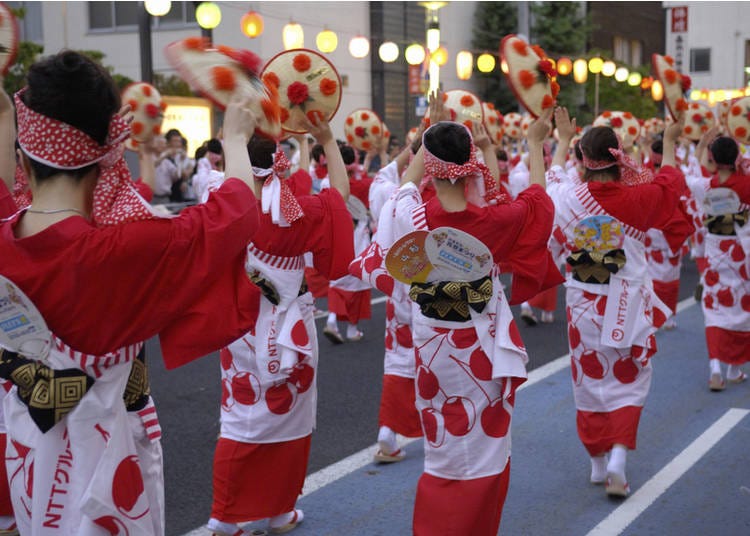
Summer weather in Japan
Summer in Japan, particularly during the rainy season in June and July, is often unpopular due to high humidity. Rainfall, though not significantly more than in spring, is heavy. August brings sunny and hot weather, with Tokyo averaging highs of 31°C (88°F) and lows of 24°C (75°F), while Hokkaido enjoys milder temperatures of around 26°C (80°F) on average.
July – Mid-August: Summer Season
Moderate crowds. Japan's summer is hot and humid but is punctuated by vibrant festivals, which are free to attend, and lively beach resorts and beer garden activities. Early to mid-July might still see some summer rains, but they are generally sporadic.
Mid-August / Obon Week
High crowds. This period is akin to Golden Week in terms of busyness, with widespread travel across the country. Due to the heavy congestion, it's advisable to avoid traveling during this time.
End of August – End of October
Low crowds. Post-summer, when everyone returns to work or school, is an excellent time for quieter visits. The weather is warm, around 30°C (86°F), but less humid, making it more comfortable. Typhoons can occur but are typically short-lived, and indoor alternatives like museums and spas provide excellent rainy-day options.
- You'll need plenty of light, breezy clothes to endure the heat.
- If you’re planning on mountain climbing or visiting Hokkaido, then pack some jackets and pants.
- The humidity will make you sweat a lot, so bringing or buying deodorant is also recommended.
- The summer sun is very glary, especially on concrete streets, so decent sunglasses are necessary.
- Buy a cheap plastic umbrella at a convenience store if you’re out on a rainy day.
- Lastly, be careful of crowds at events, especially fireworks shows. Some of the larger ones will overburden trains for hours, and you may get stuck somewhere.
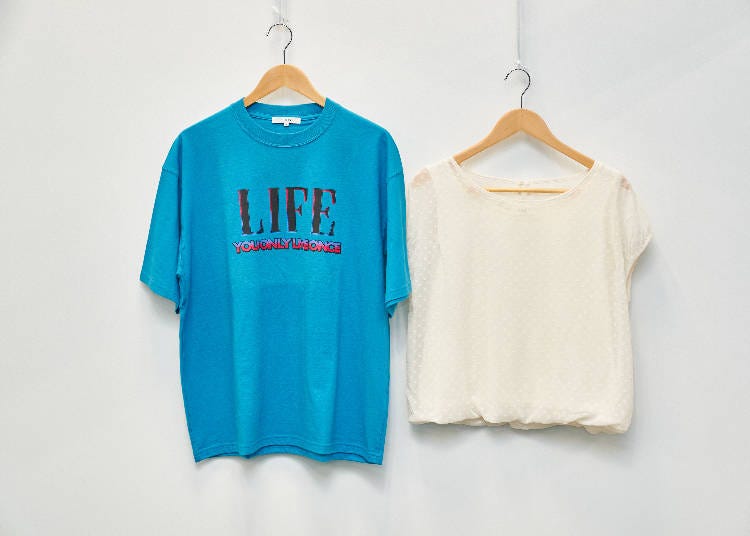
Bottom Line
Despite its reputation, summer is a great season to spend in Japan. Through the huge array of local festivals, it is arguably when the roots of traditional Japan are felt most strongly. For those sensitive to humidity, perhaps wait for another time.
Visiting Japan in autumn
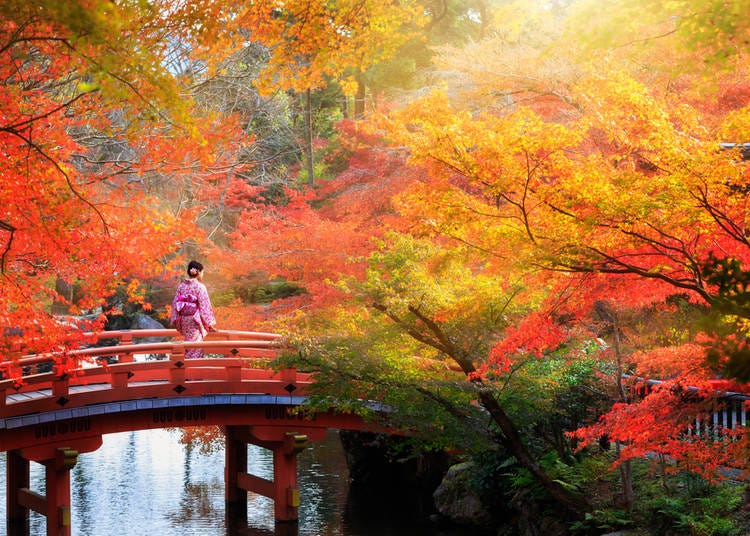
Autumn weather in Japan
Autumn brings variable weather, requiring both summer attire and jackets. By October, cities like Sapporo and Sendai become chilly, with lows around 7-11°C (45-52°F), while Tokyo maintains a warmer climate, with highs around 22°C (72°F). Beware of typhoons, especially in September, which can disrupt travel and daily activities.
November / Fall
High crowds. Autumn is a prime time for tourism, driven by the stunning momiji (autumn leaves), which begin turning in mid-November. This season is very popular, often requiring accommodations to be booked months in advance, and it features cooler, rainier weather.
- To beat the crowds, avoid foliage hotspots on weekends and public holidays. Aim to visit mid-week instead.
- If a typhoon is predicted to hit your area, ensure you have accommodation and supplies for that period, and refrain from venturing outside. Keep an eye on the news for landslides or flood warnings, and ask your accommodation staff for information on evacuation points if the weather worsens significantly.
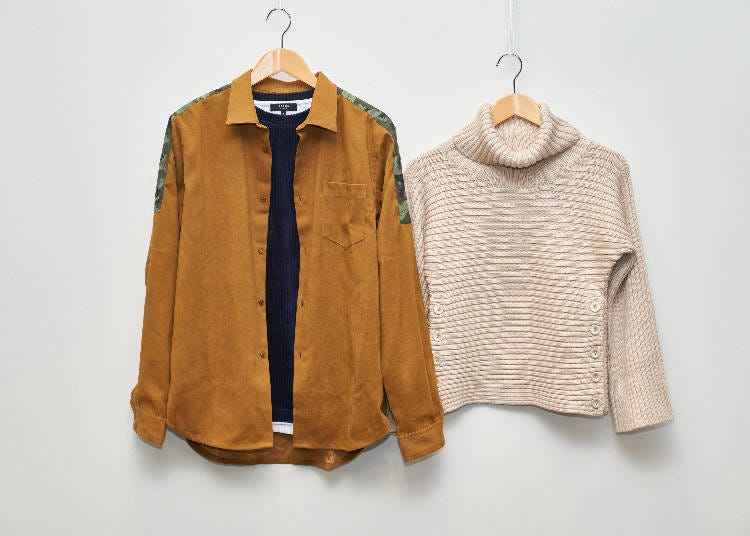
Bottom line
If you can successfully navigate around typhoons, you'll be rewarded with amazing scenery, fantastic weather, and quiet tourist attractions. Autumn is a strong contender for the best time to visit Japan.
Visiting Japan in winter
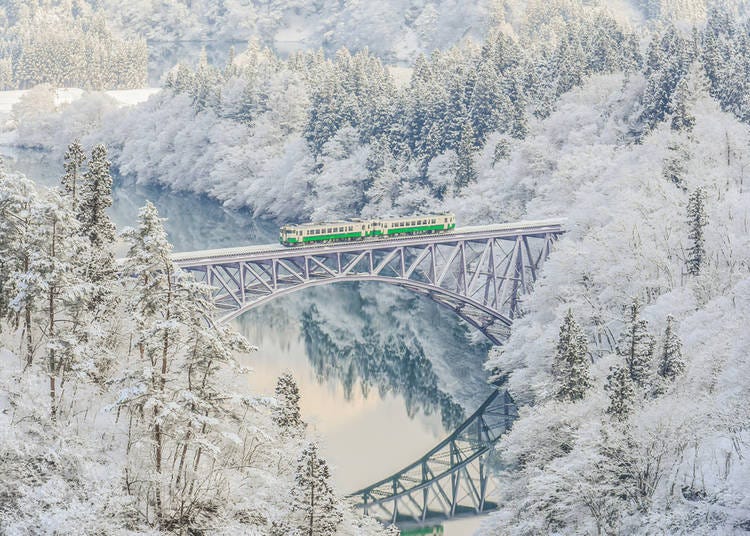
Winter weather in Japan
In January, temperatures drop to around 5°C (41°F) in southern Japan and 1°C (34°F) in Tokyo. Skiing destinations like Niigata and Nagano often see temperatures below freezing, while Sapporo experiences lows around -8°C (18°F). Snowfall is minimal in Tokyo and Osaka but common in regions near the Sea of Japan and in Tohoku, with Yamagata receiving up to 11 meters of snow.
December (Until around Christmas)
Low crowds. The early winter period offers some of the clearest days, ideal for outdoor activities and viewing autumn leaves or Mt. Fuji. Hotel rates are more reasonable, and there's better availability compared to the peak seasons.
December 20 – January 5th: Year-end Holiday Season
High crowds. Travel during the year-end holiday season is not recommended due to the influx of both international and domestic travelers and widespread closures of tourist facilities. Accommodations are often fully booked far in advance due to the holiday demand.
- If you're planning on enjoying cities such as Tokyo, Osaka, Kyoto, or Hiroshima, simple winter clothing, such as sweaters, jackets, and scarves will suffice.
- However, if you're heading to ski resorts, mountains, or snowy regions, specialized snow boots, puffer jackets, raincoats, and other winter protections are a necessity to survive the harsh conditions.
- Train delays are common during heavy snowfall, along with heavy traffic on the road. Be prepared for your trip to be affected.
- Be wary of New Years, known as oshogatsu, which is a public holiday week. While it is common for most Japanese to stay home, shops, restaurants, ski resorts, and other attractions are usually busy, and some may decide to close. Be sure to double-check the places on your itinerary before you go!
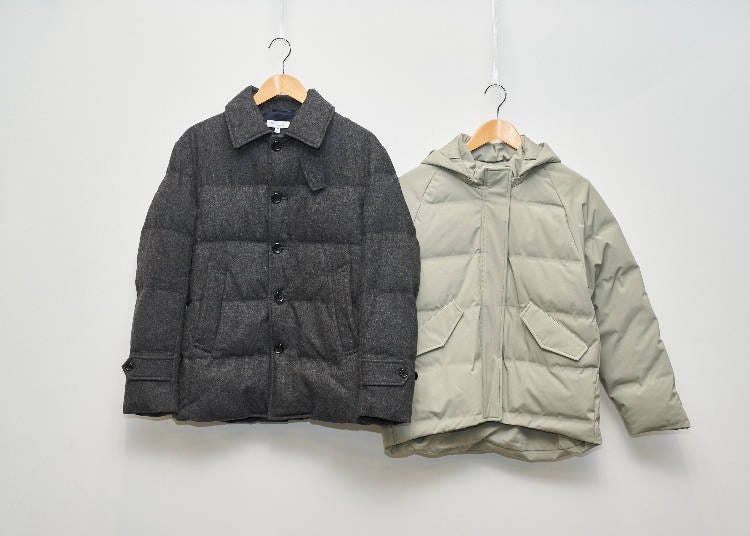
Bottom line
While winter is not for everyone, most major cities enjoy mild and consistent weather. However, some prefectures are prone to harsh conditions, and care should be taken before traveling. Crowds will be thin and most attractions quiet outside New Years and public holidays. For skiers, there's no better time!
The least crowded time to visit Japan
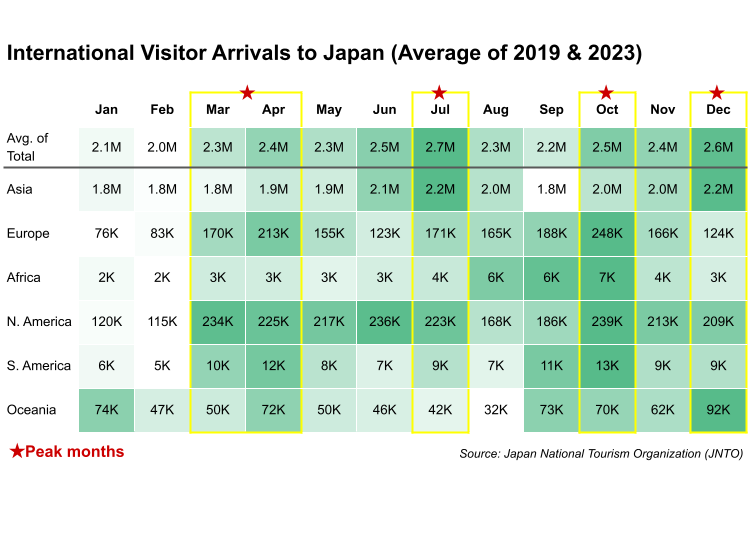
- As seen in the above chart, August to December is low on international tourists, with the quietest month being September. For those looking to beat the crowds, this is the best time!
- January and February are also scarce on European and North American travelers; however, mostly due to the Chinese New Year and summer holidays, thousands of additional tourists will flock from Asia and Oceania, making it not as ideal.
- To avoid crowds of local travelers, stay clear of these three periods.
- March: Very busy due to the good weather and cherry blossoms.
- Late April/early May: The week-long holiday of Golden Week occurs.
- Mid-August: The most popular time for Japanese to travel due to the Obon holiday period.
The cheapest time to visit Japan
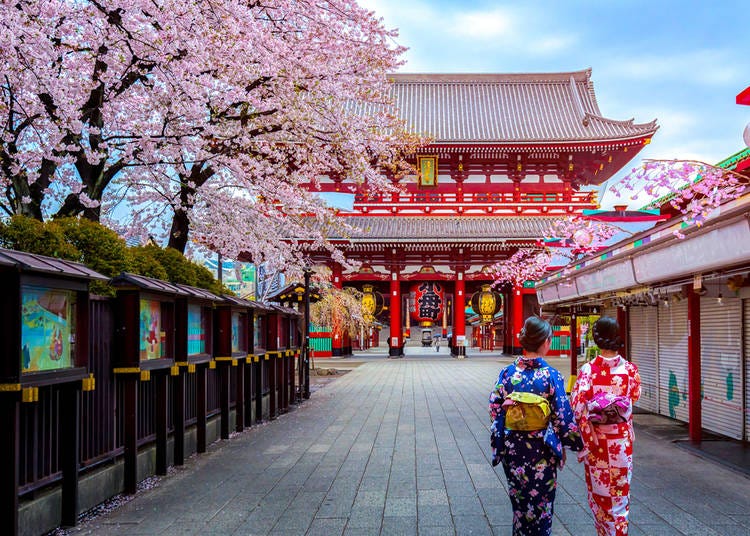
Airfares to Japan often decrease from September as tourist numbers dwindle and flight prices adjust. Depending on your travel dates, you could find flights for less than US$1,000!
For accommodation, winter, excluding ski resorts, is typically the least expensive period. Many hotels offer off-peak specials, including weekday discounts. However, note that hotel rates often increase during public holidays, so check the calendar to prevent unexpected costs.
List of Annual Events and Japan National Holidays 2024
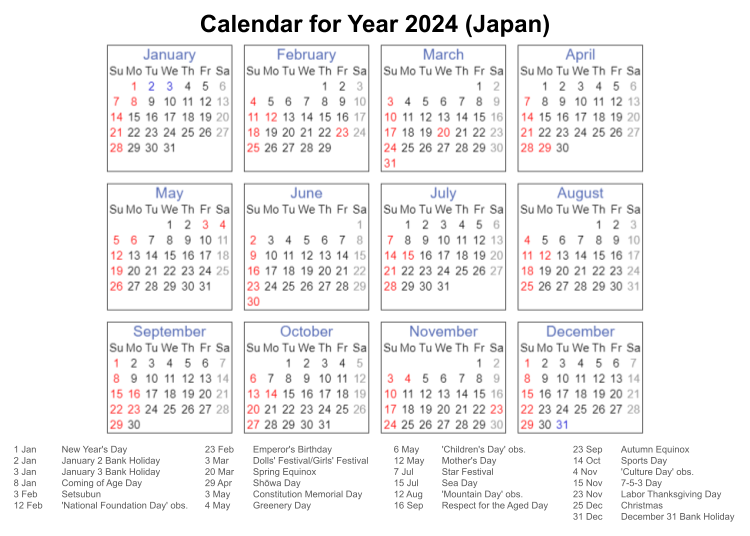
Following are Japan's national holidays. Particularly around the row of holidays in May (known as Golden Week), you can expect sightseeing areas, attractions, and major cities to be more crowded.
If you plan on traveling around these dates, be sure to make hotel, train, and activity reservations in advance to avoid inconvenience. You may also wish to consider booking tables at popular restaurants as well.
- January 1 - New Year
- January 2-3 New Year (Obs.)
- February 12 - National Foundation Day (Obs.)
- February 23 - Emperor's Birthday
- March 20 - Spring Equinox
- April 29 - Showa Day
- May 3 - Constitution Memorial Day
- May 4 - Greenery Day
- May 6 - Children's Day (Obs.)
- June 15 - Sea Day
- August 12 - Mountain Day (Obs.)
- September 16 - Respect for the Aged Day
- September 23 - Autumn Equinox
- October 14 - Sports Day
- November 4 - Culture Day (Obs.)
- November 23 - Labor Thanksgiving Day
- February 14 - Valentine's Day: Not a national holiday but celebrated in Japan, women present chocolates to men, including male colleagues, on Valentine's Day.
- March 3 - Doll's Festival (Hina Matsuri): Families with girls observe this day for their happiness and success, displaying special hina dolls at home and participating in community events.
- March 14 - White Day: This day mirrors Valentine's Day, with men giving chocolates or sweets to women.
- July/August 7 - Star Festival (Tanabata): This festival period, rather than a national holiday, commemorates the meeting of deities Orihime and Hikoboshi. Notable celebrations occur in Hiratsuka in July and Sendai in August.
- Mid-August - Obon: From around August 13-15, this Buddhist event honors ancestral spirits and is a period for family reunions.
- November 15 - Seven-Five-Three Day (Shichi-Go-San): This day marks a traditional rite of passage where families visit shrines and temples to pray for their children's well-being and growth, according to customs established over 800 years ago.
- December 25 - Christmas: While not a national holiday in Japan, it brings festive decorations and intimate celebrations, often involving a chicken dinner with loved ones or seeing Christmas illuminations.
- December 31 - New Year's Eve (Omisoka): Despite not being a national holiday, many businesses close early in preparation for New Year celebrations.
What to pack for Japan
With Japan’s four distinct seasons and subtle climate changes, travelers often question what clothes to pack. But bringing extra clothes “just in case” can make for one crammed suitcase!
Try ‘Any Wear, Anywhere’ to reduce your suitcase space

‘Any Wear, Anywhere’ is an innovative service that allows you to rent stylish clothes for all seasons and most sizes, making travel in Japan lighter and more eco-friendly. By using surplus and used garments, this service not only reduces luggage weight but also cuts down on carbon emissions in partnership with Japan Airlines. Enjoy exploring Japan with a lighter load and a clear conscience!

Using ‘Any Wear, Anywhere’ is easy. Simply access the official website from your PC or smartphone and reserve your wardrobe before traveling to Japan.
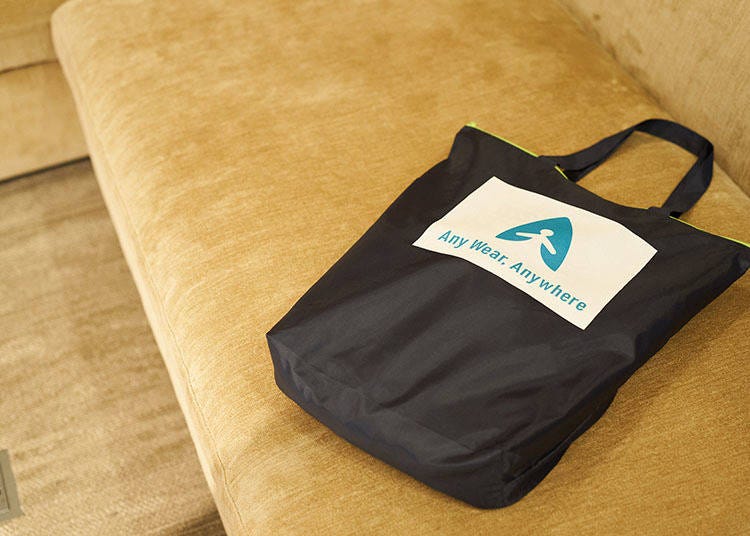
When you arrive in Japan, simply pick up your stylish rental clothes at your hotel. After use, return the clothes to your hotel without the need for cleaning.
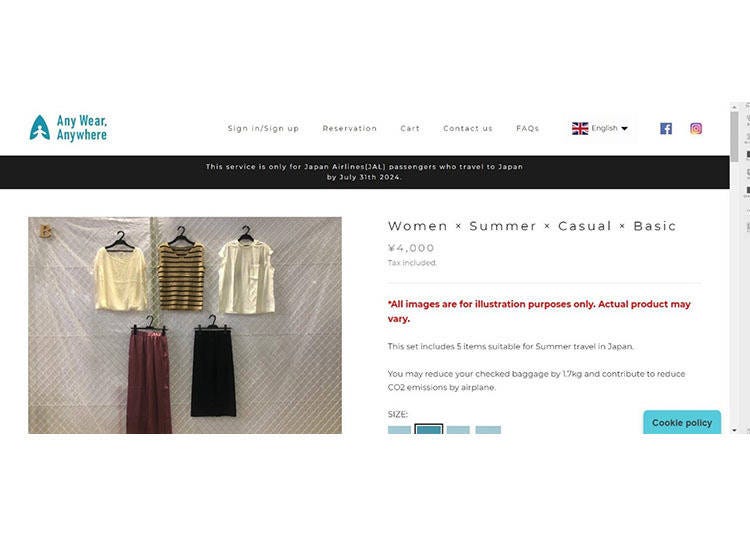
Clothing sizes range from S to XL, in a total of 36 patterns. Clients can choose from a combination of styles (for men or women), season (spring/autumn, summer/winter), usage scenario (casual, smart casual, or a mix of both), and number of clothing items included in the set (basic or variety pack).
The basic set includes three tops and two bottoms, while the variety set includes five tops and three bottoms, with the option of adding outerwear as needed.
Take a look at these examples of seasonal garments for rent
Next, let’s look at some of the menswear and womenswear rental clothes in three different seasonal styles: spring/autumn, summer, and winter!

First up is clothing for spring and autumn. In Japan, spring and autumn are both mild with daytime temperatures of around 20°C (68°F). However, it often gets chilly during the evenings and overnight, and there’ll occasionally be an uncharacteristically hot or cold day, making clothing selection particularly tricky at these times of year.
‘Any Wear, Anywhere’ boasts a line-up of shirts and T-shirts that can be easily layered to cope with temperature differences.
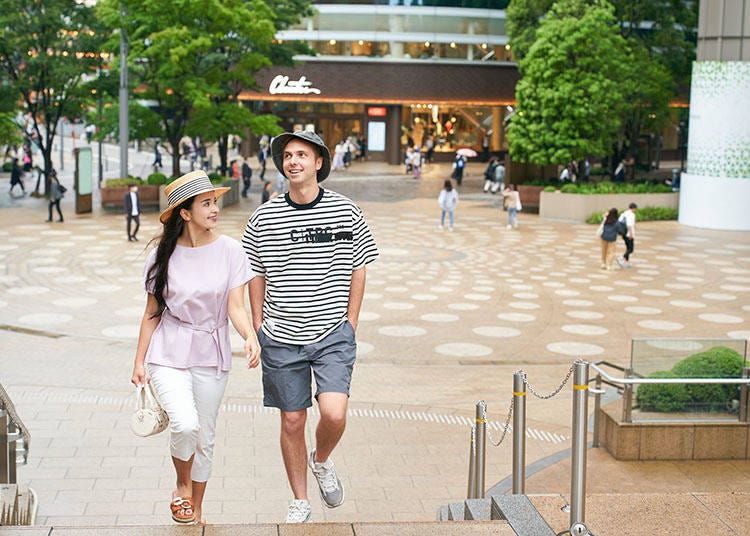
Summer in Japan is hot, humid, and sunny. If you reserve rental clothes during your summer travels, you’ll receive light and airy items such as T-shirts and sleeveless tops to help you stay comfortable while sightseeing under the hot summer sun.
Heavy rainstorms and typhoons can be expected between July and September, so short-length pants can alleviate any worries about wet legs and feet in the event of sudden showers.
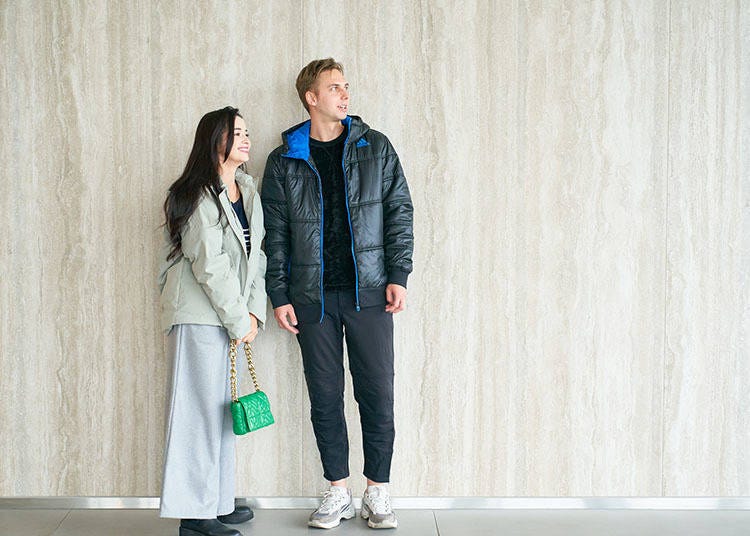
Warm clothes are essential for winter in Japan. It can get so cold that the temperature drops below freezing in some areas! The ‘Any Wear, Anywhere’ winter line-up also includes down jackets and other outerwear to protect against the cold.
Winter jackets are bulky and take up luggage space, so renting one at your destination makes life so much easier. Popular rental clothing items to wear underneath your jacket include sweaters, long-sleeved tops, and other clothes that’ll help you stay warm.
*All accessories belong to the stylist.
Final Word
No matter when you visit Japan, you'll have a good time! Japan is a country that celebrates each season accordingly, making for year-round fun! However, if you have a specific activity or interest, choosing the best time to visit Japan for you is extremely important.
Balancing this with crowds and costs will also help you get the most out of your Japan trip. By reading this guide, you'll have all the information you need to enjoy Japan's wonders to their fullest extent!
- Category
*Prices and options mentioned are subject to change.
*Unless stated otherwise, all prices include tax.
Limited time offer: 10% discount coupons available now!
Recommended places for you
-
Appealing
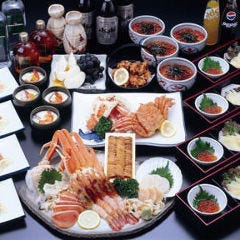
Rukku and Uohei
Izakaya
Sapporo / Chitose
-
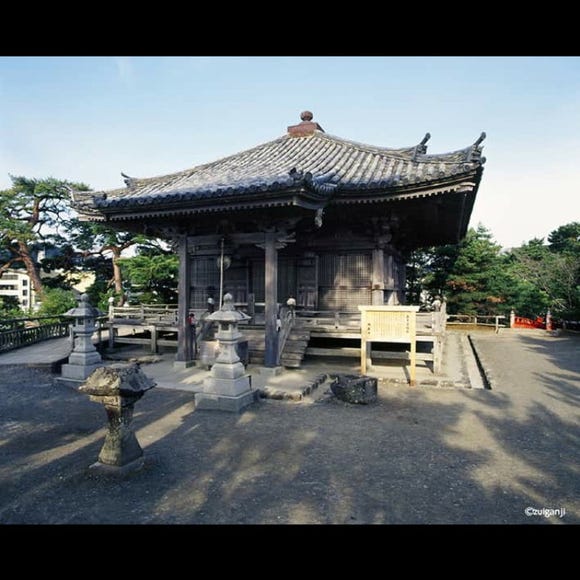
Zuiganji Temple
Temples
Sendai And Matsushima
-
Goods

Yoshida Gennojo-Roho Kyoto Buddhist Altars
Gift Shops
Nijo Castle, Kyoto Imperial Palace
-
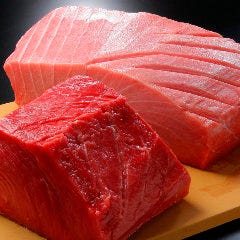
Kamesushi Sohonten
Sushi
Umeda, Osaka Station, Kitashinchi
-
Menu
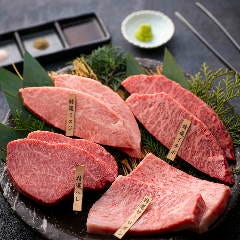
ISHIDAYA Hanare
Yakiniku
Kobe, Sannomiya, Kitano
-

Jukuseiniku-to Namamottsuarera Nikubaru Italian Nikutaria Sannomiya
Izakaya
Kobe, Sannomiya, Kitano
-

Step Into the Story: Inside Immersive Fort Tokyo
-

Best Things to Do in Tokyo in April 2024: Events, Festivals & More
-

12 Unique & Fun Tokyo Food Tours to Enjoy in 2024
-

Opened in Spring 2024! What to do at Tokyu Plaza Harajuku Harakado
-

Everything You Need To Know About the Kyoto-Osaka Sightseeing Pass
-

15 Must-Try Restaurants in Ikebukuro: From Aged Yakiniku to All-You-Can-Eat Sushi, Plus Adorable Animal Cafés
-
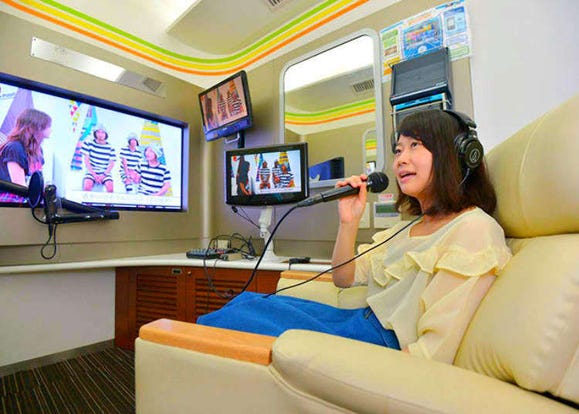
Spending Wonderful Time Alone in Shibuya - Free Cosmetics and a Hundred-Yen Bus!
-
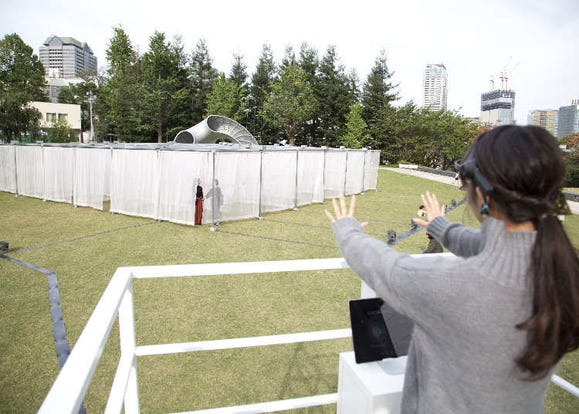
Tokyo Midtown DESIGN TOUCH 2016 – The Design Event Not to Miss!
-
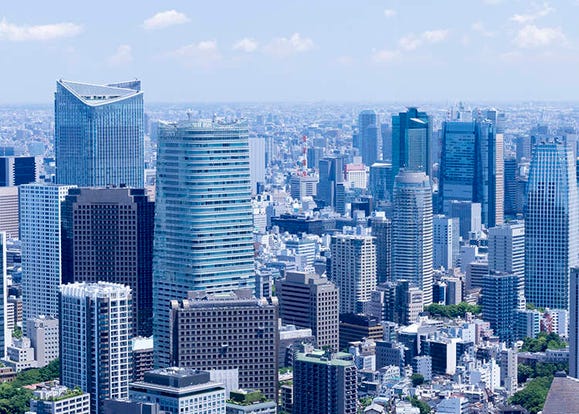
Roppongi: Then and Now
-
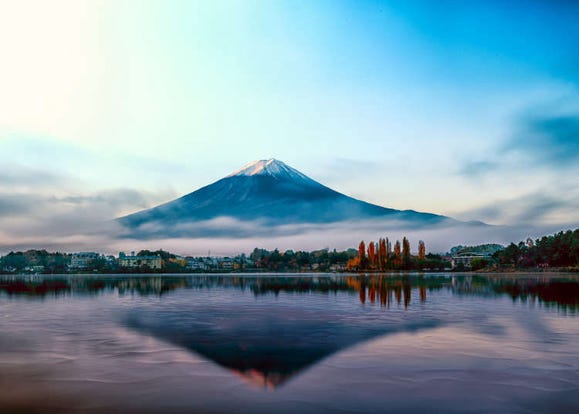
16 Secrets About Mt. Fuji, the Symbol of Japan: Even Japanese People Don’t Know That?!
-
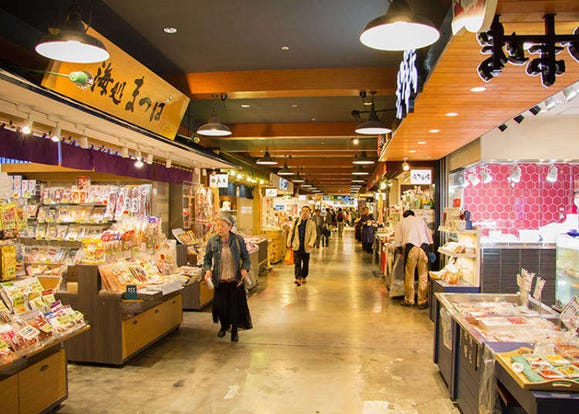
Sapporo New Chitose Airport (CTS): Complete Guide to Restaurants, Souvenirs, Shopping & More!
-
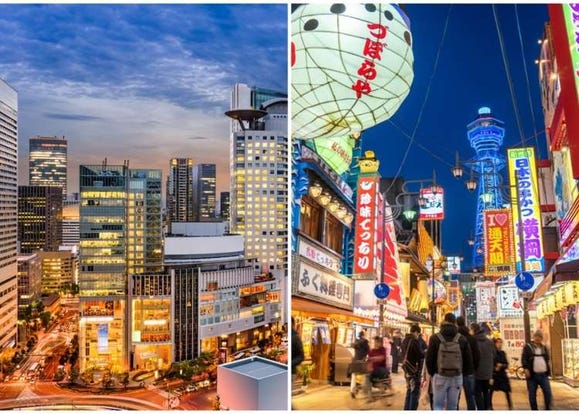
Minami or Kita? Here's All About Osaka's Main Sightseeing Areas
- #best sushi japan
- #what to do in odaiba
- #what to bring to japan
- #new years in tokyo
- #best ramen japan
- #what to buy in ameyoko
- #japanese nail trends
- #things to do japan
- #onsen tattoo friendly tokyo
- #daiso
- #best coffee japan
- #best japanese soft drinks
- #best yakiniku japan
- #japanese fashion culture
- #japanese convenience store snacks
















